 0
0

TQS Member Karen Watts (krwatts) has an accounting background, but left that world behind to take care of her family. She thinks of herself as a traditional quilter with a twist. We asked Karen to answer a few questions about her quilting background, how she found herself the owner of a Gammill, and if she had any tips she'd like to share about creating her award-winning quilts.
How long have you been quilting? What got you started?
I celebrated my 20th anniversary of quilting earlier this year. I remember the date well because I went to Ohio to visit my Grandmother in April 1991, and she took me to a shop that was half counted cross-stitch and half quilt shop. I was doing a lot of cross-stitch back then, but I've always loved fabric, having grown up with a mother that sewed everything EXCEPT quilts! A good friend of mine had recently shown me a log cabin quilt she had started, and I was intrigued. So, it was on this fateful trip to Ohio that my eye was caught by a fat quarter packet in The Daisy Barrel, and the rest is history. That first quilt was a sampler, made by using cardboard templates and scissors, and sewn on my mother's 1949 Singer Featherweight. I finished the top, but before I quilted it I made about a dozen more, thus establishing my habit of having MANY projects going at the same time.
Did you have a profession other than quilting?
So long ago it seems like another life, I was an accountant. I worked for various airlines for 10 years, then worked in Aerospace for another 5 years or so. I continued working after my son was born in 1987, but stopped 6 months after my daughter was born in 1992. My son had been diagnosed with autism, and between taking him to various therapies 3 times a week and caring for a newborn, something had to go and it was the job! So I've been happily retired since late 1992. And believe me, quilting was the only way I kept my sanity.
Who are your quilting influences?
Early on I learned a lot from Joen Wolfrom; I think I have all of her books and have read them cover to cover. For piecing and design, I'm inspired by Karen Stone and Claudia Clark Myers. For quilting, it's Karen McTavish, Janet Fogg, and Marilyn Badger. In fact, Marilyn Badger is my quilting idol! And for overall great design, use of color, machine applique, and fabulous quilting, Ricky Tims!
How would you define your "style" of quilting?
I think my style would fall somewhere in between. Maybe traditional with a contemporary twist. I really love taking a traditional design or block and making it my own, either by changing the design, using non-traditional colors, or adding other design elements.
My favorite way to design right now is to respond to a challenge. I belong to a "bee" that has been meeting regularly since 1997, and we will periodically issue a challenge. Our first challenge was a portrait exchange. For this challenge, we drew names and had to make a quilt that depicted that person, however it did not have to be an actual "portrait". Our second challenge we call the Page 36 challenge. We each brought a magazine to bee, and assigned a number to them. The magazines could not be quilt magazines. Then each person drew a number and got the magazine with the corresponding number. Another drawing gave us the page number, which turned out to be 36. Everyone had to turn to page 36 in their magazine and make a quilt that was inspired in some way by that page.
Our next challenge had the theme of "ancient symbols". We exhibited these challenges at our guild's quilt shows and they were very well received. Our current challenge has the theme "Out of Africa" and has been juried into the 2011 AQS Knoxville show. Sometimes we have a size limitation, but our bee's most famous rule is "there are no rules"!
The other challenges I have entered are the AQS Ultimate Guild Challenge and the National Quilt Museum "New Quilts From an Old Favorite". The guild I belong to, Lakeview Quilters Guild, entered the Ultimate Guild Challenge in 2005, 2007, and 2010. We won 1st place in 2007 with our theme of "fruit", and 3rd place in 2010 with the theme of "seasons". I had a quilt in each year, Journey Thru the Cosmos in 2005, Strawberry Fields in 2007, and Mariner in 2010.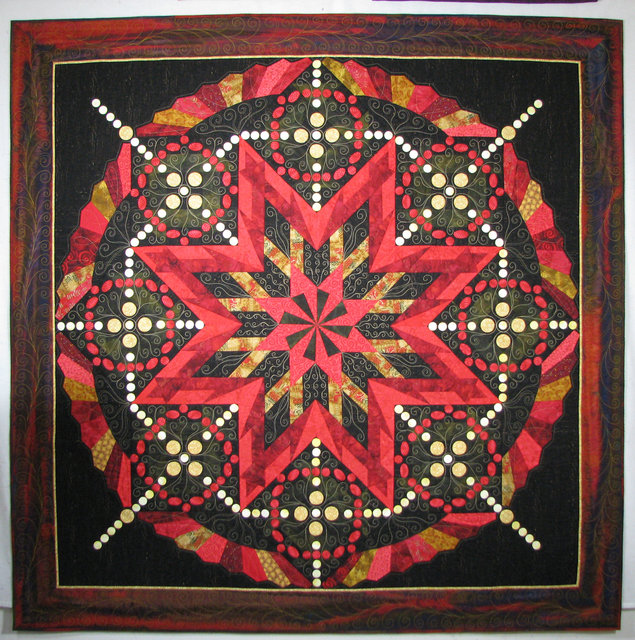
Tell us about the New Quilts from an Old Favorite contest.
I first entered the New Quilts Fr
om an Old Favorite (NQOF) contest in 2008, when the block was Sawtooth. I was thrilled to be a finalist! That quilt is Sawtooth Spin. The next year was Burgoyne Surrounded, and my quilt Mandala (to the right) won 3rd place, which was really exciting and guaranteed that I would enter the following year. The next year was the Sunflower block, and my quilt Navajo Sunflower was a finalist.
This year the block was Orange Peel, and I started working on that one really early. Usually I'm finishing my contest entry days before the deadline; this time I had the bright idea to finish my quilt in time to display it at our local guild show in May 2010. I'm really glad I did - Tangerine Dream took first place in its category, Innovative, and also Best of Show! The deadline for entries to the IQA Houston show was about 2 weeks later, so I thought, "why not?" I entered and was thrilled to be juried in, then was even more thrilled to win a third place ribbon. What a great reward for finishing early. Later in the year when the judging took place for NQOF, Tangerine Dream won another 3rd place ribbon.
Do you have a favorite quilt (one of your own)? Do you have a favorite quilt made by someone else?
Right now my favorite quilt is Tangerine Dream. I feel like I came up with a good design, and I love the colors I used. But really, all of my challenge quilts are favorites. Some of my favorite quilts by others are Bear On the Trail and They Came by Canoe by Janet Fogg. Also Sparkle Plenty by Claudia Clark Myers and Marilyn Badger. And New York Deco by TQS member Michael Michalski!
What are you working on now?
I'm currently trying to finalize my design for the 2012 NQOF contest, which is the Basket block. And I'm wondering how I'll get it done in time, since all my fabric and supplies are in boxes from moving from Houston to New Mexico (which took place 2 weeks ago). And the Gammill is in pieces in the garage!
When did you decide to try long-arm quilting?
I have always done my own quilting, first on a Singer Featherweight, then on a little Bernette, and later on my Pfaff 6270. But quilting a large quilt on a small home machine is a chore, so when a local shop offered to buy a longarm and train me to use it, I jumped at the chance.
Using a longarm is so much easier, although it can be strenuous as well. I also think you have so much more freehand design capability due to the larger quilting space available and the fact that you move the machine, not the quilt.
How did you learn to quilt on it after it was delivered?
I took classes at Linda's Electric Quilters in McKinney, Texas. Linda Taylor is a pioneer in longarm quilting and I think it pays to learn from the best!
Did it take you very long to become proficient?
No, not really. I learned on a Gammill without a stitch regulator, but since I was used to regulating my own stitches anyway it wasn't a big deal. I immediately loved the ease of moving the machine over the quilt, with no "stuffing" the quilt through the small space of a home sewing machine. And no basting!
I started quilting for customers after I had practiced on 10 quilts. I probably would have waited longer, but I was a little pressured by the quilt shop to start. I was proficient, but, like any skill, you get better and better the more you do it.
What tips can you offer to new longarm quilters, that might make it easier or more enjoyable?
Take classes from the wonderful longarm teachers that are out there, and practice, practice, practice! And challenge yourself to try new designs. Step out of the box.
How do you decide how you are going to quilt a quilt?
I usually stare at it awhile, and think about quilting designs while I am loading it on the Gammill. If it is my quilt, I also think about it while I am piecing it. If it's a customer quilt, we'll talk about what they want to see, and I'll suggest ideas. Many times the design in the fabric used will suggest a quilting design. Taking a quilting design from the fabric really helps to integrate the quilting with the quilt.
Do the quilts "speak" to you?
Sometimes they do, and you learn to listen, or you may be taking quilting stitches out! And sometimes you want them to speak but they are deathly silent. That is very hard.
Do you make any sort of mock-up, paper pattern before you do the actual quilting?
I have done that, but not usually. The one I did that on the most was Mandala.
If a quilt has a fairly traditional design, do you do anything to make the quilting more contemporary or do you keep in line with the traditional style?
I generally think the quilting should be in the same style as the quilt.
What makes you decide to enter a quilt show or contest?
I haven't entered that many national shows, but it just depends on if I have a quilt I feel is worthy. I haven't made any quilts specifically to enter in shows other than the NQOF contests.
How do you decide which show to enter?
If the quilt can be done by the deadline for entries!
You've had some exciting moments lately, is there one that was most rewarding?
I am always thrilled just to be juried into a show; getting a ribbon is the icing on the cake. But I was flabbergasted to win Best of Show at our guild show in 2010 with Tangerine Dream. We have extremely talented, award-winning quilters in our guild, and Best of Show usually goes to a bed-size, traditional quilt. Another wonderful moment was at awards night at the Houston 2010 show: my friend Patty Mayer and I won 1st place with New York Jazz. That same quilt then won a 2nd place at AQS Paducah.
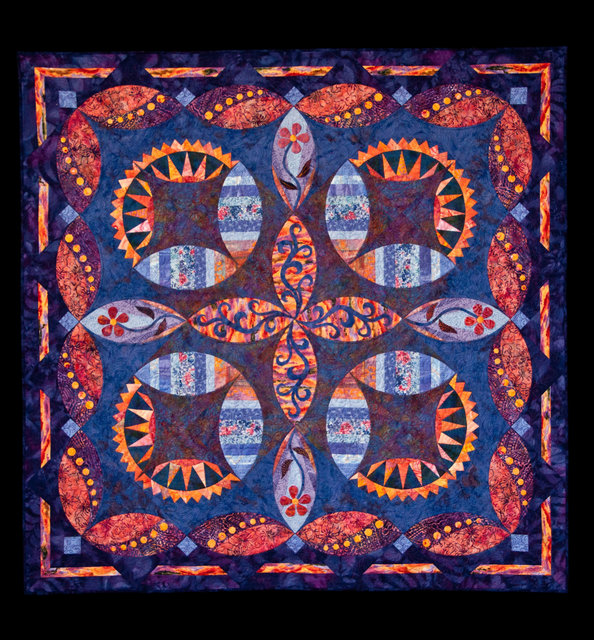
Tell us about Tangerine Dream
It won 1st place and Best of Show in Lakeview Quilter's Guild 2010 show, 3rd place in IQA Houston 2010, and 3rd place in New Quilts From an Old Favorite 2011.
What was your thought process behind this quilt?
I needed to design an original quilt using the orange peel block in a new and different way. I had been thinking of designing something with an Art Nouveau feel, but it wasn't working. Then I ran across a piece of fabric with surfboards all over it and the light bulb went off! My husband and I lived in Southern California before moving to Houston, and he was an avid surfer. Surfboards can be wonderful pieces of art, and the shape made me think of my orange peel blocks. I decided I could put many different designs in my orange peels and started drawing my ideas. I came up with at least a dozen different orange peel blocks and over 4 dozen layouts before I decided on the one I made.
Did it come out like you expected?
Yes, it did! I thought piecing it would be a nightmare, but it actually went together very well.
Looking at it now, would you do anything differently?
No, I don't think I would.
Tell us about your move from Texas to New Mexico and what you are up to now.
Making the move from Houston to Cloudcroft, New Mexico has been a dream since 2005. We bought our place in the mountains as a vacation home, and visited it whenever we could. But we still had 2 kids to get through school, one of them with special needs. 2010 was an amazing year, as my daughter graduated from high school and went to college, we moved my son from Houston to Albuquerque, where he works part time and lives on his own, and we started construction on my quilt studio. We made the actual move with our 3 cats. We are still surrounded by boxes and wondering why we brought all this stuff, but we see deer, elk, coyote, fox, and have baby woodpeckers in a tree outside our kitchen. And last night our neighbor had a bear in his yard!
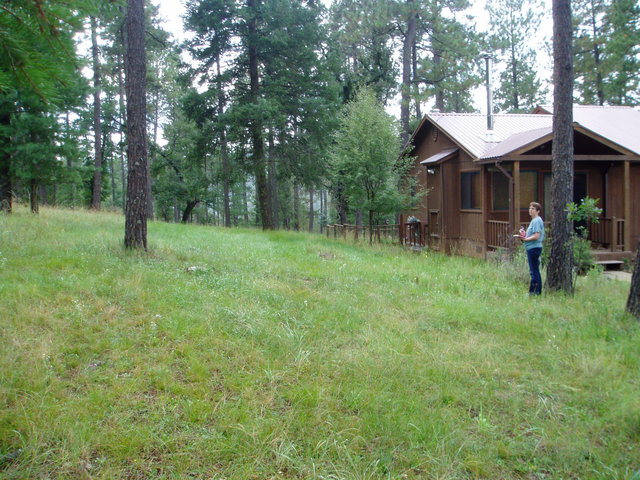



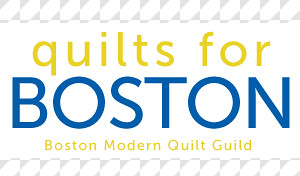
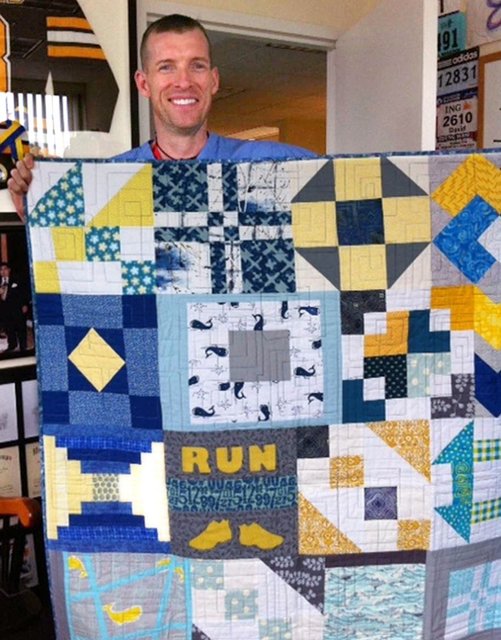
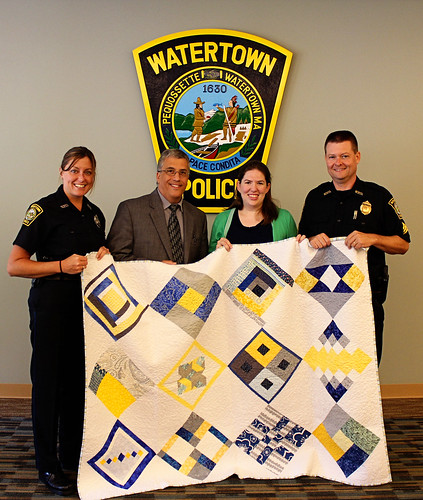
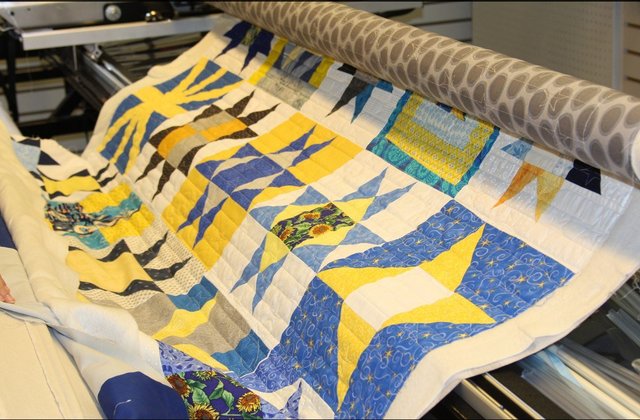
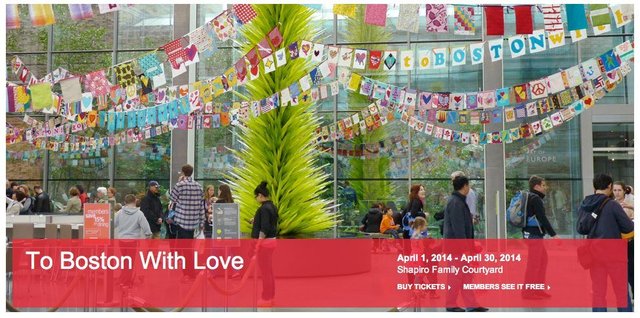
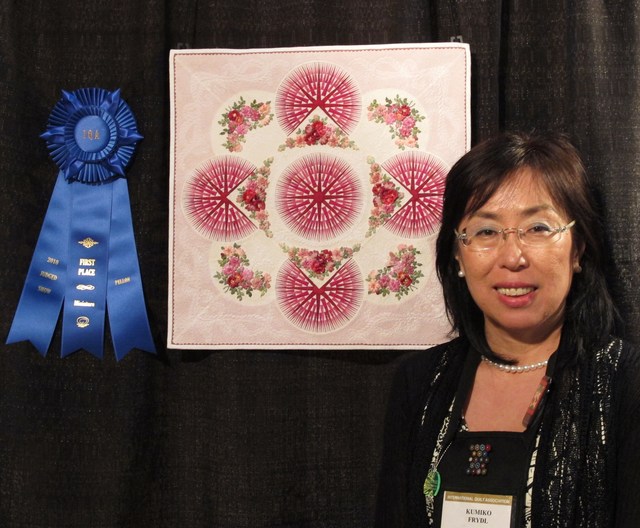

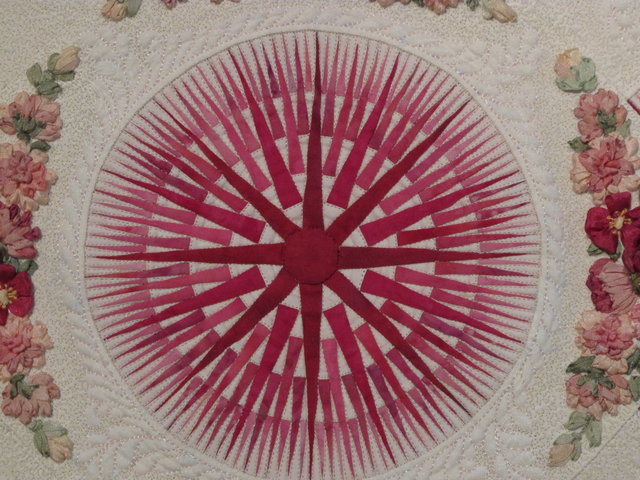

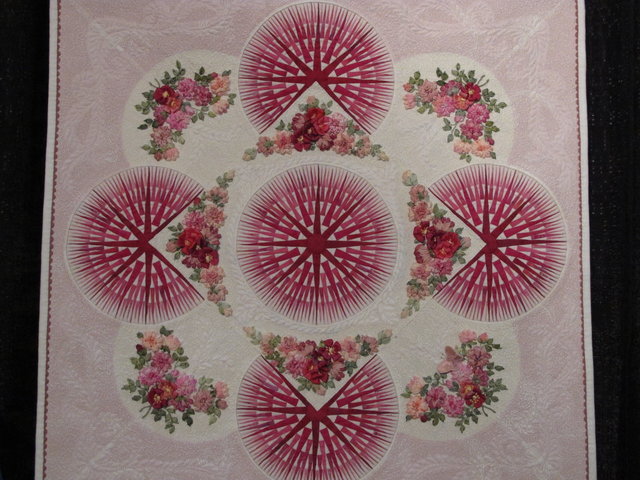
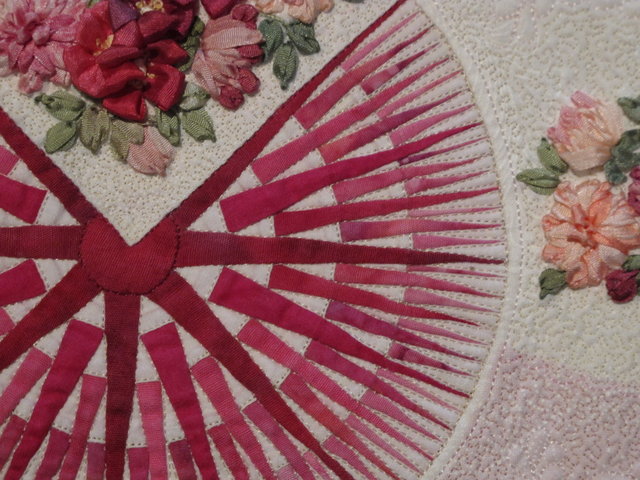

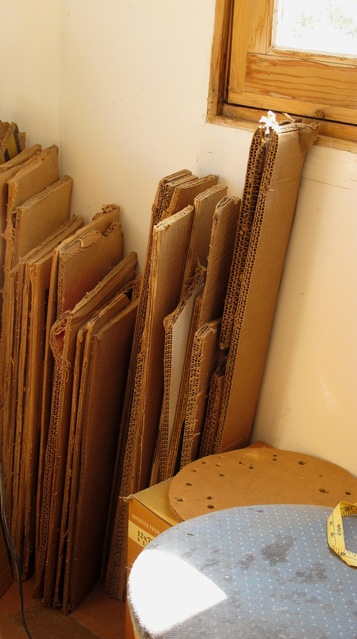
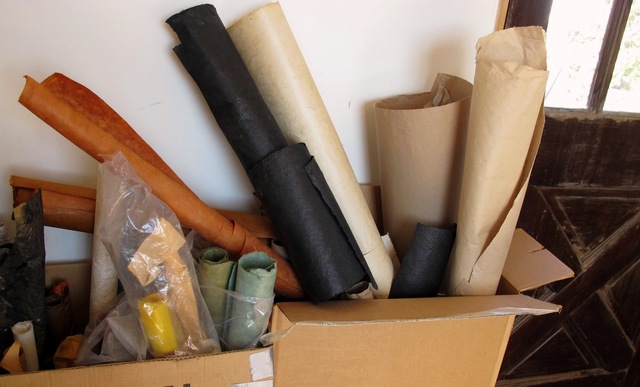
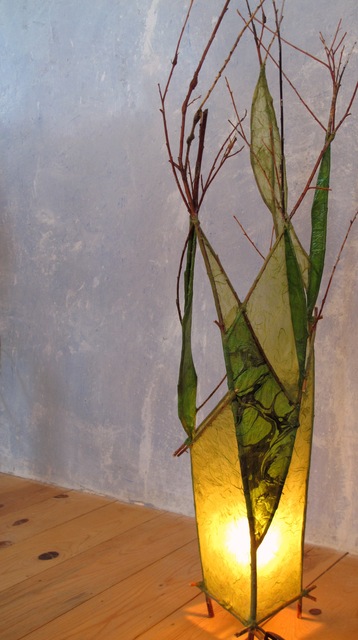






.jpg)


